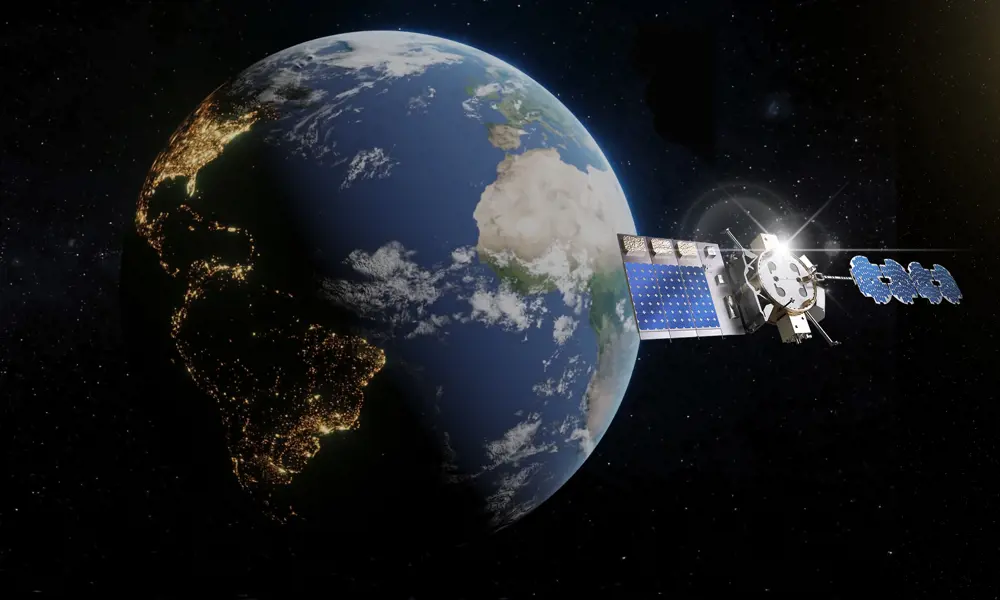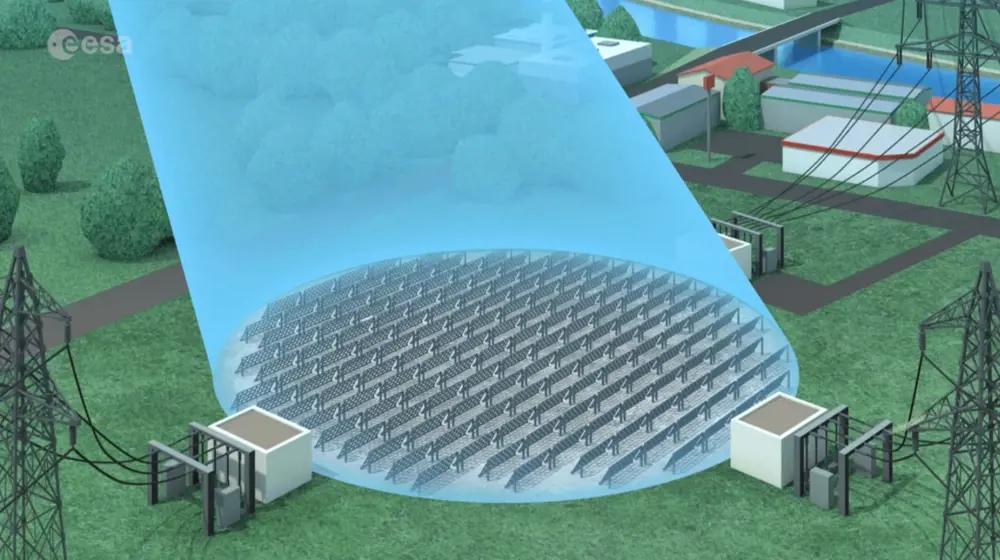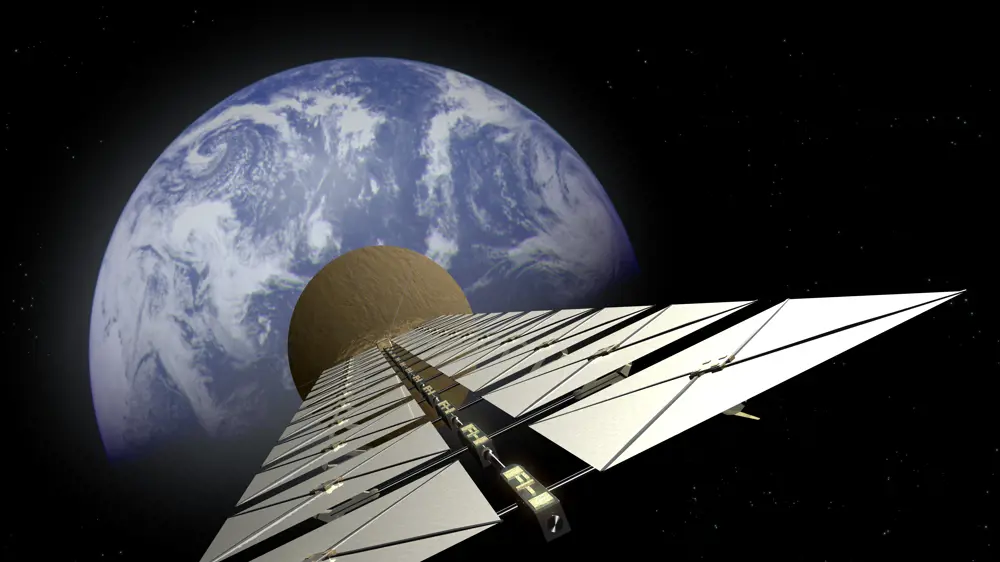
Generating solar energy from space
It’s common knowledge that we need more methods of generating electricity without emitting carbon dioxide into the atmosphere. Solar power presents a tantalising prospect. However, solar’s intermittency has prevented it from being used on a much larger scale, and much of that is down to the weather: specifically, cloud cover. So, putting solar panels above the clouds would allow solar energy to be collected throughout daylight hours, whatever the weather. Engineers have developed all of the component technologies of space-based solar – photovoltaic panels, conversion of their output into microwaves, beaming those microwaves across space, converting them back into electricity – all of which are in regular use: it’s how energy is routinely routed around large satellites and the international space station, for example. It just needs to be scaled up.
The equipment needed to generate energy
But that’s a big ‘just’. The scale of equipment for practical space-based solar is larger than anything humans have deployed in space. The collector satellites would need to be in geostationary orbit above the region to which they will supply power. They will also need to support an array of photovoltaic panels with an area about a kilometre in diameter and weighing an estimated 1,000 tonnes to generate electricity equivalent to a typical power station. Such spacecraft could never be launched from Earth: they would have to be assembled in orbit. Engineers have achieved orbital assembly – most notably with the International Space Station, which was taken into space piece by piece and built gradually by spacewalking astronauts and robots – but only in low-Earth orbit and at a much smaller scale. Building such large systems at such a great distance will undoubtedly be a challenge on a scale that could only be tackled by international cooperation, but it would not require the development of completely novel technologies.

Artist's impression of an on-the-ground rectenna receiving energy from space © ESA
The microwave beam carrying the power to Earth would spread out on its journey and require a receiver on the surface measuring about 7 kilometres by 10 kilometres – the size of roughly 70 football pitches. Such an installation, known as a rectenna, would consist of a series of pylons spread out across the region: they could, for example, easily be located offshore, where they would occupy less space than the largest current windfarms. By the time the energy arrives at the surface it would be so spread out that it would present no hazard across most of the area. The pylons could also be located on land, and such sites could even be used for agriculture with crops growing or animals grazing around the pylons.
Solar space technologies – then and now
NASA and ESA (the European Space Agency) are actively investigating the development of this technology, alongside major space technology companies. “Today, it’s not feasible, but tomorrow it will be,” says Matt O’Donnell, a space systems architect of the forward-looking Advanced Systems Advanced Concept Group at Airbus. “And we are right on the cusp from today to tomorrow. We look at topics that are just over the horizon – things that the main part of the company that does day-to-day work isn’t pursuing. Our job is to bring those ideas to maturity more quickly, and to prepare the company to be ready when they become commercial opportunities.”
Previous research into beaming solar energy across space peaked in the 1970s, Matt says. In June 1975, NASA’s Jet Propulsion Laboratory wirelessly transmitted 34 kW of electrical power across 1.5 kilometres at an efficiency greater than 82%, setting a record at the time. “Then it went cold for a while as a research topic,” he says. “The key thing that is different now is the net zero 2050 targets.” A notable milestone in the revised research was an experiment in May 2008 that saw power beamed 148 kilometres between mountains on two of the islands of Hawaii – a distance roughly equivalent to the depth of the Earth’s atmosphere. Moreover, the experiment transmitted at 2.45 GHz, a likely operating frequency for a real space-based solar system. “Today we have projects that could contribute to such systems,” adds Matt. “The UK Space Agency is looking at a national project for a satellite removal mission and are developing robot arms for that. They could be redeveloped to be part of assembly equipment. We need to use that similar underlying technology concept to build something very much larger and to keep doing it over and over and over again, in a way that is demonstrably safe … A region the size of the UK would need several orbital platforms and rectenna, so we are looking at much larger things than we have ever made before.” Another missing part of the jigsaw is the capacity for regular heavy launches, a gap that NASA’s Space Launch System (the launcher for the Artemis lunar missions) or SpaceX’s Starship might fill. “You’d be throwing 100 tonnes into orbit every couple of weeks for a long time, but again that’s just increasing the scale of implementing technology we currently have.”

Artist's impression of a satellite harvesting solar power ©ESA
International collaboration
A 2022 ESA ministerial meeting proposed a programme called SOLARIS, which is investigating the viability of space-based solar power for terrestrial clean energy needs. “They haven’t said we are going to build a space-based solar power station,” Matt explains, “they’ve said we want to understand more the feasibility questions, the societal questions and the roadmap to do it.”
This could be a big opportunity for UK space. “Parts of the space community in the UK are looking at transportation and robotics; universities are looking at new solar technology; the energy sector is looking at efficient energy, smart energy networks and so on.”
A UK company, Space Solar, is looking at how the UK can best contribute to such ventures. Its co-CEO, Martin Soltau, a business director for space activities at Frazer Nash consultancy, expresses an unusual view among businesspeople that Brexit may have helped in this case. “We are talking about lots of bilateral discussions with a number of nations, particularly the kind of natural partners you can imagine around the Commonwealth,” he explains. “We are pulling together a very commercial, agile programme. That’s at variance with other initiatives globally. The US, for example, has got very military-led programmes with the naval and air force research labs. Japan has a very academic-led programme. Most of them are policy led, whereas ours is a commercial approach and we are pulling together investments from both public and private finance. Our focus is very much on making a substantial difference by 2050.”
“Parts of the space community in the UK are looking at transportation and robotics; universities are looking at new solar technology; the energy sector is looking at efficient energy, smart energy networks and so on.”
Matt O’Donnell, Space Systems Architect, Airbus
In a report published in 2021, Frazer Nash devised a development roadmap proposing 18 years as a development time for a deployable system. “That’s a pretty reasonable timescale with a sort of business-as-usual approach to funding and technology development,” Martin says. “But with space solar as a commercial entity to take forward a development programme, we have a collaboration of over 75 organisations including leading universities and the government, and we’ve built on the Frazer Nash work and developed a more ambitious 12-year roadmap. So if we do get going this year, we would be talking about 2035 for the first fully operational power station delivering commercial electricity.”
While still in its early stages, space-based solar power could not only help decarbonise the energy supply; it could also provide significant opportunities for the UK space industry in the future.
Keep up-to-date with Ingenia for free
SubscribeRelated content
Aerospace

ALMA – the high altitude observatory
The Atacama Large Millimetre/submillimetre Array (ALMA) is the largest and most expensive ground-based telescope built, revolutionising our understanding of stars and planetary systems. Building it in the Atacama Desert in Chile required the ingenuity of hundreds of engineers.

Communicating with outer space
The Royal Academy of Engineering awarded a team at BAE Systems the Major Project Award in June 2016 for their development of a powerful satellite modem system, pivotal in enabling the precise control of the pioneering Rosetta spacecraft and the first-ever soft landing of a spacecraft on a comet.

An aircraft like no other
The Airlander made headlines when it embarked on its first test flight in August 2016 as the world’s largest aircraft. Chris Daniels at Hybrid Air Vehicles Limited, and David Burns, Airlander’s Chief Test Pilot, talk about the engineering that helped it reach this stage and plans for the craft’s future.

Q&A: Lucy Harden
Lucy Harden is a mechanical engineer on BAE Systems’ Digital Light Engine Head-Up Display development programme. She devises innovative solutions for pilots to display essential flight information that sits directly in their line of sight and is overlaid onto the real world.
Other content from Ingenia
Quick read

- Environment & sustainability
- Opinion
A young engineer’s perspective on the good, the bad and the ugly of COP27

- Environment & sustainability
- Issue 95
How do we pay for net zero technologies?
Quick read

- Transport
- Mechanical
- How I got here
Electrifying trains and STEMAZING outreach

- Civil & structural
- Environment & sustainability
- Issue 95